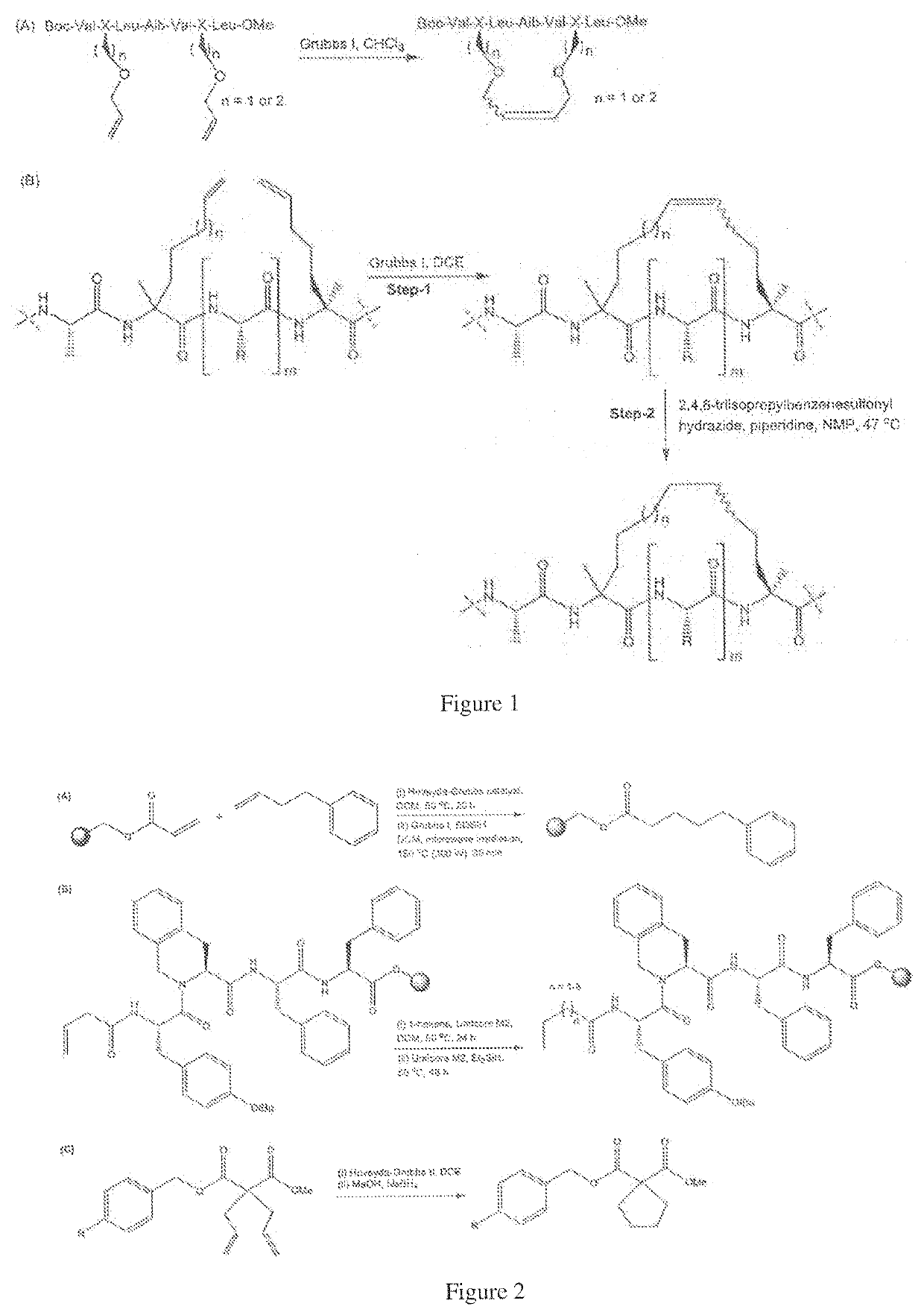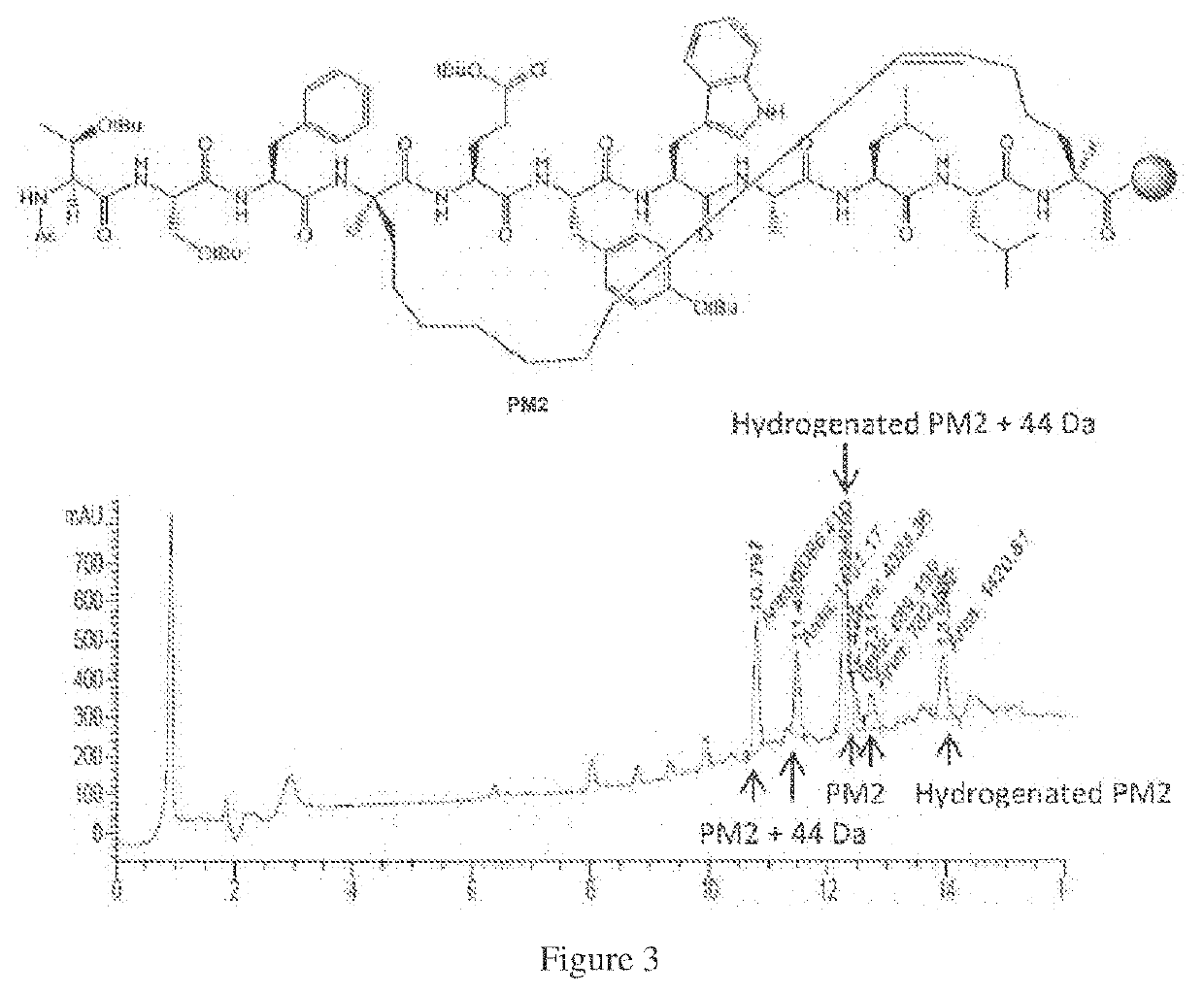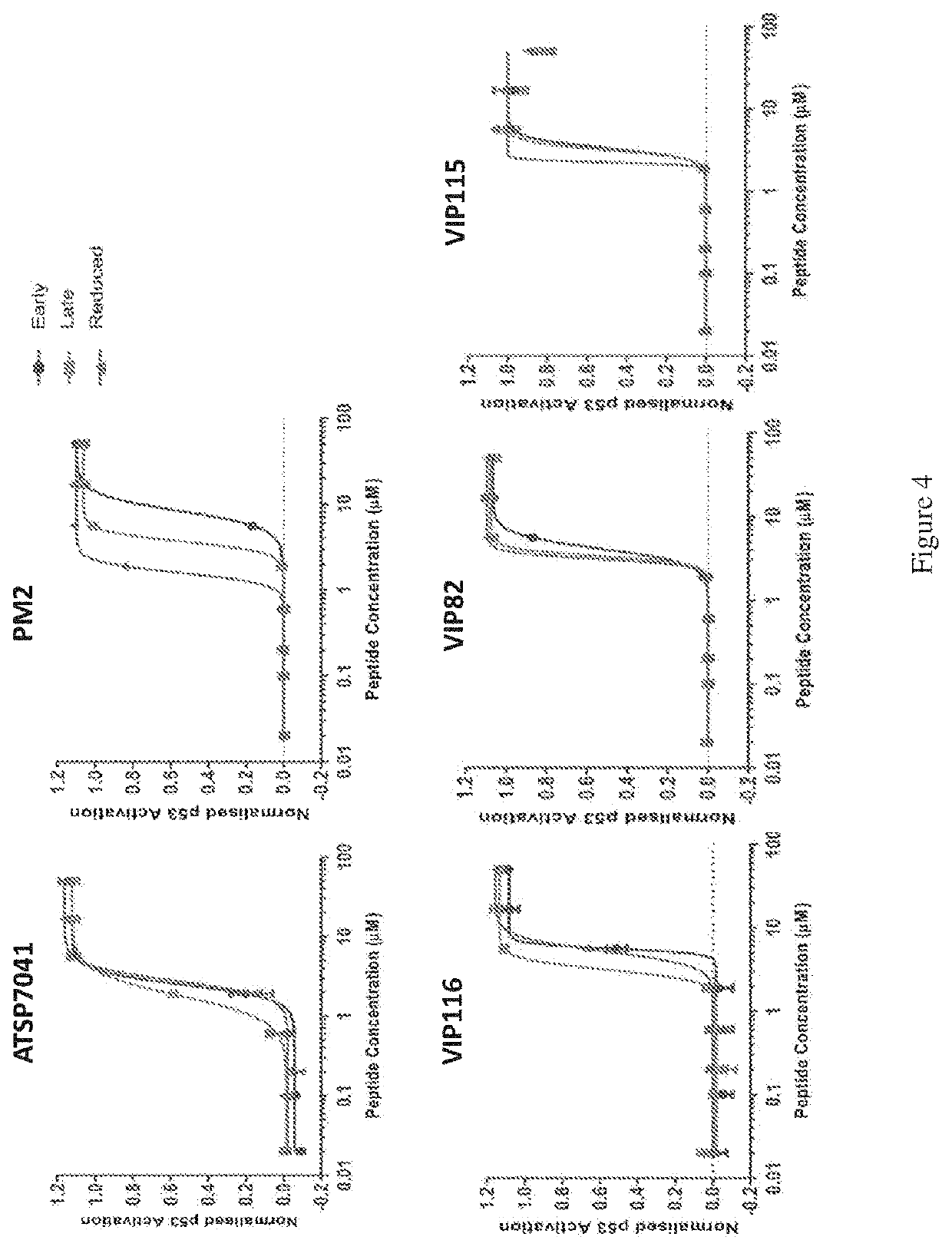Method of preparing stapled peptides
a stapled peptide and stapled technology, applied in the field of preparing saturated stapled peptides, can solve the problems of cumbersome and impractical entire process, inability to meet the requirements of the process,
- Summary
- Abstract
- Description
- Claims
- Application Information
AI Technical Summary
Benefits of technology
Problems solved by technology
Method used
Image
Examples
example 1
[0096]A method of one-pot ring closing metathesis-hydrogenation is described below which details a solid-phase method of preparing saturated stapled peptides by using a one-pot ring closing metathesis-hydrogenation sequence. Whilst transfer hydrogenation may be achieved using sodium borohydride and variants, it is believed to be most effective with hydrosilanes, such as triethylhydrosilane, as the reagent. This simple and practical protocol, as exemplified below, provides a useful complement to the current state of art in stapled peptide synthesis and modification.
[0097]In this method, following completion of ruthenium-catalysed metathesis, the resin-bound unsaturated stapled peptide was treated with neat triethylhydrosilane at 50° C. to achieve solid-phase transfer hydrogenation. After periodic replenishments of reagents (every 2 hours for the first 4 hours) and overnight reaction, the corresponding reduced peptide was recovered in good yield. Initial experiments indicated the use ...
example 2
[0103]In order to evaluate the influence of the geometry of the hydrocarbon bridge on the biological activities of stapled peptides, saturated stapled peptides were prepared using the described protocol and their p53 activity were compared to the corresponding unsaturated stapled peptides.
[0104]15 stapled peptide variants were titrated onto T22 p53 reporter cell lines in 2% serum conditions (FIG. 4). These variants are the two geometric isomers (i.e., where the intramolecular linker contains a carbon-carbon double bond which may be either the (E) or (Z) isomer), and the reduced, saturated stapled isomer, for five different stapled peptides. The five stapled peptides in this study are:[0105]ATSP-7041=Ac-LTF(R8)EYWAQ(cba)(S5)SAA-NH2 [0106]PM2=Ac-TSF(R8)EYWALL(S5)-NH2 [0107]VIP116=Ac-K(Ahx)TSF(R8)EYWALL(S5)ENF-NH2 [0108]VIP182=Ac-KK(Ahx)TSF(R8)EYWALL(S5)ENF-NH2 [0109]VIP116=Ac-KKK(Ahx)TSF(R8)EYWALL(S5)ENF-NH2
[0110]From the study, it can be seen that the reduction of the staple olefin ...
PUM
| Property | Measurement | Unit |
|---|---|---|
| temperature | aaaaa | aaaaa |
| temperature | aaaaa | aaaaa |
| temperature | aaaaa | aaaaa |
Abstract
Description
Claims
Application Information
 Login to View More
Login to View More - R&D
- Intellectual Property
- Life Sciences
- Materials
- Tech Scout
- Unparalleled Data Quality
- Higher Quality Content
- 60% Fewer Hallucinations
Browse by: Latest US Patents, China's latest patents, Technical Efficacy Thesaurus, Application Domain, Technology Topic, Popular Technical Reports.
© 2025 PatSnap. All rights reserved.Legal|Privacy policy|Modern Slavery Act Transparency Statement|Sitemap|About US| Contact US: help@patsnap.com



